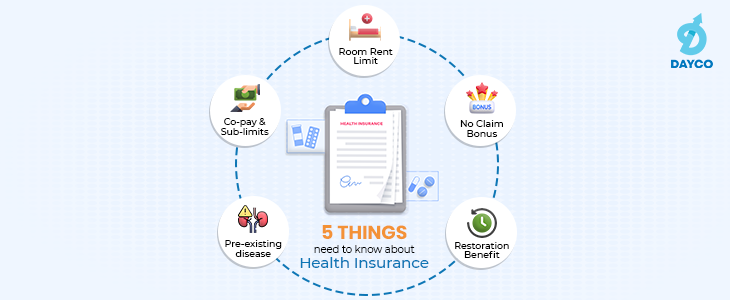In a world where financial security and stability are paramount, exploring investment avenues that offer both growth and safety becomes essential. Public Provident Fund (PPF), a popular and time-tested investment option that has been a trusted ally for individuals looking to secure their financial future.
The Public Provident Fund, launched by the Government of India, has been a go-to investment choice for crores of people for over half a century. Individuals unable to be part of the EPF scheme can opt for PPF to save for retirement or meet other financial goals like child’s education or child’s marriage.
Here’s a Quick ‘Get To Know Me’ for PPF-
- Eligibility criteria:
Any Indian citizen can invest in the PPF scheme. However, the account limit for a person is restricted to one unless the second account is in the name of a minor. Each account holder should have a nominee for their respective accounts. Joint accounts cannot be held.
Non-Resident Indians and HUFs are exempt from investing in PPF.
- Investment cap:
One can open a PPF account with a minimum deposit of Rs.100. However, the minimum investment for a financial year (FY) should be Rs.500, with a cap on a maximum investment of Rs.1.5 lakh per year. Annual investments exceeding Rs.1.5 lakh do not generate any interest.
- Tenure:
The minimum lock-in period for a PPF investment is 15 years. It can be extended for an additional five years. The deposits into the account have to be made every year at any frequency, with a maximum of 12 installments.
- Interest rate:
The current PPF interest rate is 7.1%, compounded annually on March 31. The government reviews the prevailing rates on PPF every quarter
Rules on PPF Loans & Withdrawals
1. Loan
Drawing a loan against your PPF is a salient feature of the PPF scheme. Between the beginning of the third year and the end of the sixth year, any PPF account holder can take a loan against their PPF account. However, the entire sum available in the account cannot be withdrawn.
The cap on loan withdrawal is limited to 25% of the balance existing two years before the loan application was made.
For example, if you invest in PPF in FY 2023-24, you can avail of loan facilities from April 1, 2025, till March 31, 2029. If you make a loan application in FY 2026-27, you can draw a loan up to 25% of the balance in the account as on March 31, 2025.
The loan needs to be repaid within 36 months, and new loans are off-limits until the existing one has been settled. Loans attract an interest rate of 1% per annum. Once levied, the rate remains fixed during the loan repayment tenure. If loans aren’t repaid in the stipulated time frame, the interest rate is levied at the rate of 6%instead of 1%.
2. Withdrawals
Partial Withdrawal
Withdrawals can be made from the beginning of the 7th financial year, and the amount eligible for withdrawals is the lower of:
- 50% of 4th year-end balance immediately preceding the withdrawal year, or
- 50% of the balance at the end of the preceding year of the withdrawal year.
For example, if a PPF account was opened in FY 2023-24 (say April 1 2023), an application for withdrawals can be made beginning FY 2028-29, and the account holder can withdraw a lower of:
- 50% of the closing balance of FY 2024-25, or
- 50% of the closing balance of FY 2027-28.
Complete Withdrawal
In some cases, you may be able to close the PPF account before the expiry of the 15-year lock-in period. If a complete withdrawal is to be made, the account will have to be closed prematurely after the completion of 5 FYs from the commencement of the PPF plan. Account closures are permissible in events of serious matters only with substantial proof, for example, for treatment of a life-threatening sickness or if the residential status of the account holder changes.
3. Renewal
At the end of the 15-year tenure, a PPF account holder has three options:
- At the expiry of a 15-year term, the account holder can withdraw the entire account balance and close the account. They will have to submit an account closure form for this procedure.
- They can also extend the PPF account without making any fresh deposits post-maturity for any period. The balance continues to earn interest. The holder may make one withdrawal each year of any amount within the balance.
- Account holders can also extend their accounts with fresh deposits. The extension period is for a block of 5 years. The PPF account can be extended in blocks of five years indefinitely. For this, the holder has to inform the respective bank or post office of this decision within a year of account maturity. If they fail, the account holder will not be able to continue the account with deposits. On the other hand, once this option is exercised, it cannot be revoked. However, if the account is continued with deposits for one or more block periods, the account holder can leave the account without deposits on completion of any block period.
On exercising the last option, the account holder can withdraw a maximum of 60% of the account balance at credit at the commencement of the block period in one block of 5 years. Withdrawals are permitted in single or yearly instalments. The balance continues to earn interest till it is closed at the end of any block period.
Tax Regime
Under the old tax regime, individuals are entitled to claim deductions under various sections of the Income Tax Act, including Section 80C, which covers PPF investments. Contributions made towards the PPF are eligible for a deduction of up to Rs. 1.5 lakh per financial year. Additionally, the interest earned and the maturity amount are both tax-exempt, making the PPF an attractive option for long-term tax-efficient savings. This gives PPF the EEE (Exempt-Exempt-Exempt) status in the old regime.
The new tax regime was introduced in the budget of 2020 and offered lower tax rates than old regime in exchange for the removal of most deductions and exemptions. Under this regime, the tax benefits associated with PPF investments, including the deduction under Section 80C, are not available. This removes the EEE status of PPF under the new regime but the interest earned and the maturity amount are both tax-exempt regardless of the regime opted.
The new tax regime introduced a significant change beginning FY 2023-24 in the tax landscape, which can make PPF deductions of 1.5 lakhs immaterial for most people as the new tax regime would be a better choice. Post this change, it is important that you analyse the tax liability under both the regimes and choose the better one. The old tax regime makes sense only for individuals who have lot of deductions. You can learn more about the new changes here.
Finally, Why PPF?
Despite multiple options existing in the financial world to make some extra bucks out of your idle money, PPF sets apart from the rest due to the tax-free interest rate and sovereign guarantee. Remember, the PPF remains a reliable investment instrument, offering stability and attractive returns under both tax regimes. PPF is a very ideal vehicle for conservative investors with long-term financial goals and retirement needs.
If you have a question, share it in the comments below or DM us or call us – +91 9051052222. We’ll be happy to answer it.
















